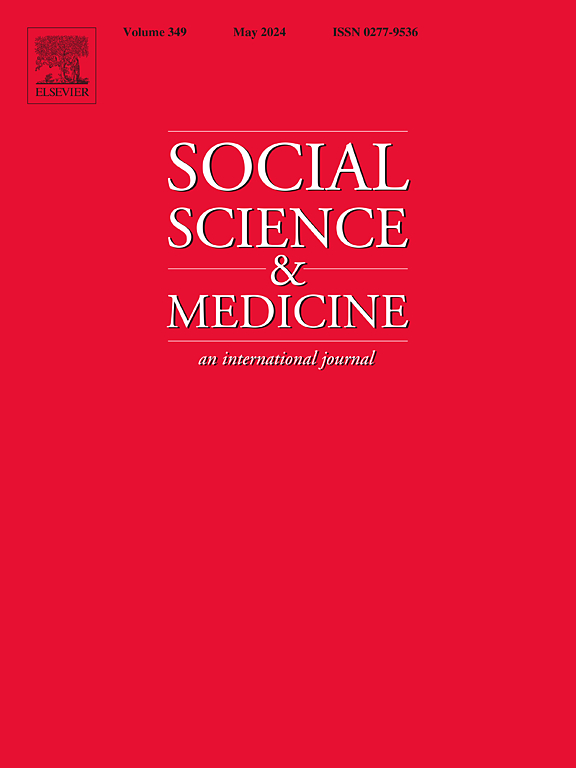The risk of suicide mortality according to income dynamics assessed using health insurance premium data: A nationwide cohort study in Korea
IF 5
2区 医学
Q1 PUBLIC, ENVIRONMENTAL & OCCUPATIONAL HEALTH
引用次数: 0
Abstract
Low income is a known risk factor for suicide; however, how changes in income and its fluctuation relate to suicide risk remains unexamined. Using the Korean National Health Insurance Service database, 4,031,867 adults aged 30 years or older who underwent a health checkup in 2012 were followed until the end of 2022. Based on health insurance premiums, income levels and changes between 2008 and 2012 were assessed. Low-income status was defined as the lowest quartile or receiving Medical Aid. Income variability was the standard deviation of the percentage change in income over five years. Hazard ratios (HRs) and 95 % confidence intervals (CIs) for suicide were calculated using multivariable Cox regression. During a 9.2-year follow-up, 10,012 suicide deaths (0.25 %) occurred. Persistent low income for five years was associated with a 48 % increased suicide risk (HR 1.48, 95 % CI 1.38–1.58) compared with those never in low income. Conversely, persistent high income was associated with a decreased suicide risk (HR 0.67, 95 % CI 0.64–0.71). Income decreases resulting in low-income status (HR 1.26, 95 % CI 1.12–1.43) and high variability in income (HR 1.37, 95 % CI 1.29–1.45) were also associated with increased suicide risk. These patterns were consistent regardless of the presence of depression and disability but were more pronounced in males and those under 65. In conclusion, persistent low-income, income decreases, and high variability were all independently associated with increased suicide risks. Suicide prevention strategies should promote income stability while accounting for age and sex.
根据收入动态评估的自杀死亡率风险,使用健康保险费数据:韩国的一项全国性队列研究
低收入是自杀的一个已知风险因素;然而,收入的变化及其波动与自杀风险之间的关系仍未得到研究。利用国民健康保险公团数据库,对2012年接受健康检查的403.1867万名30岁以上成年人进行了截止到2022年末的跟踪调查。根据医疗保险费,评估了2008年至2012年的收入水平和变化。低收入身份被定义为最低四分之一或接受医疗援助。收入变异性是指五年内收入百分比变化的标准偏差。采用多变量Cox回归计算自杀的风险比(hr)和95%置信区间(ci)。在9.2年的随访期间,发生了10012例自杀死亡(0.25%)。与从未处于低收入的人相比,持续五年的低收入与48%的自杀风险增加相关(HR 1.48, 95% CI 1.38-1.58)。相反,持续的高收入与自杀风险降低相关(HR 0.67, 95% CI 0.64-0.71)。收入减少导致的低收入状况(HR 1.26, 95% CI 1.12-1.43)和收入的高度可变性(HR 1.37, 95% CI 1.29-1.45)也与自杀风险增加有关。无论是否患有抑郁症和残疾,这些模式都是一致的,但在男性和65岁以下的人中更为明显。综上所述,持续低收入、收入减少和高变异性都与自杀风险增加独立相关。自杀预防策略应该促进收入稳定,同时考虑到年龄和性别。
本文章由计算机程序翻译,如有差异,请以英文原文为准。
求助全文
约1分钟内获得全文
求助全文
来源期刊

Social Science & Medicine
PUBLIC, ENVIRONMENTAL & OCCUPATIONAL HEALTH-
CiteScore
9.10
自引率
5.60%
发文量
762
审稿时长
38 days
期刊介绍:
Social Science & Medicine provides an international and interdisciplinary forum for the dissemination of social science research on health. We publish original research articles (both empirical and theoretical), reviews, position papers and commentaries on health issues, to inform current research, policy and practice in all areas of common interest to social scientists, health practitioners, and policy makers. The journal publishes material relevant to any aspect of health from a wide range of social science disciplines (anthropology, economics, epidemiology, geography, policy, psychology, and sociology), and material relevant to the social sciences from any of the professions concerned with physical and mental health, health care, clinical practice, and health policy and organization. We encourage material which is of general interest to an international readership.
 求助内容:
求助内容: 应助结果提醒方式:
应助结果提醒方式:


